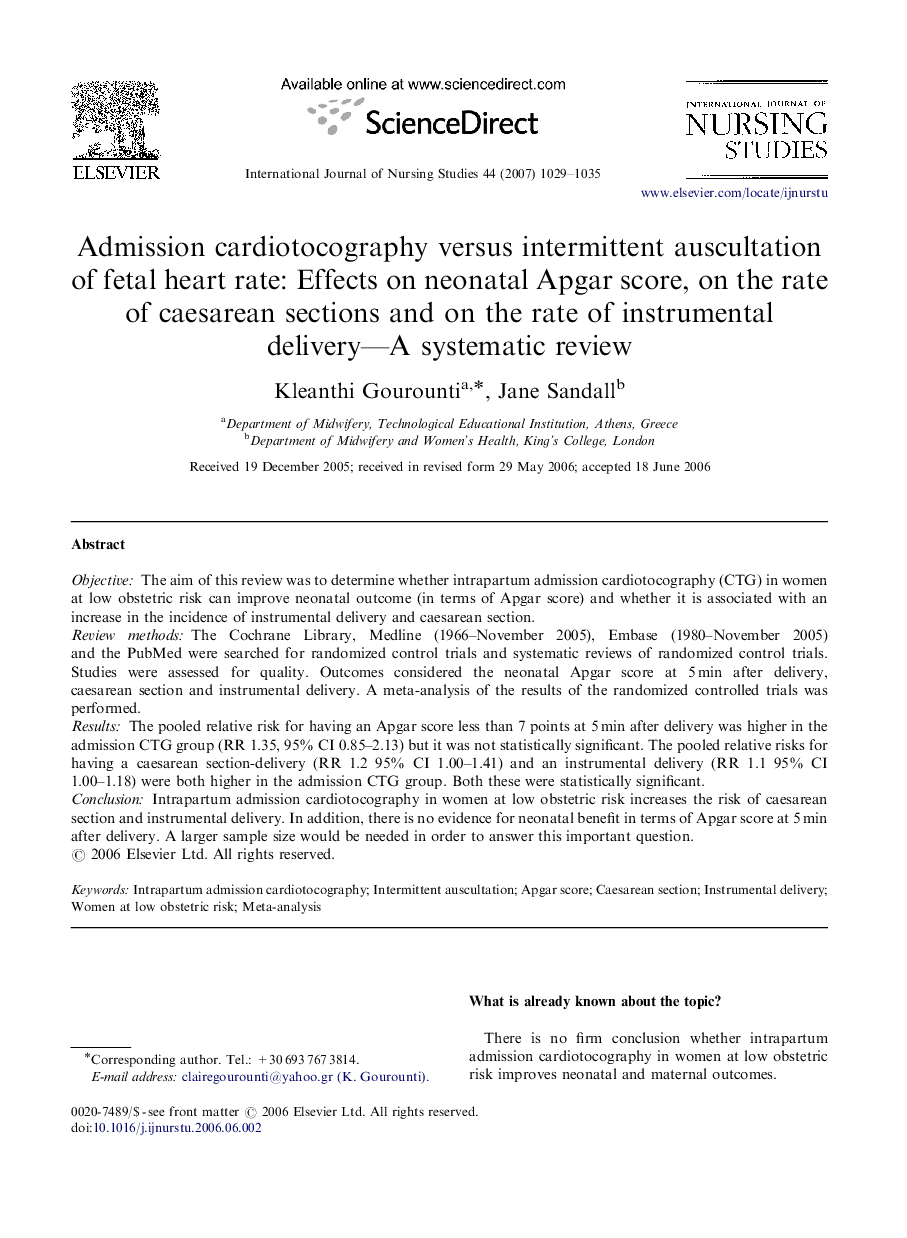| Article ID | Journal | Published Year | Pages | File Type |
|---|---|---|---|---|
| 1077405 | International Journal of Nursing Studies | 2007 | 7 Pages |
ObjectiveThe aim of this review was to determine whether intrapartum admission cardiotocography (CTG) in women at low obstetric risk can improve neonatal outcome (in terms of Apgar score) and whether it is associated with an increase in the incidence of instrumental delivery and caesarean section.Review methodsThe Cochrane Library, Medline (1966–November 2005), Embase (1980–November 2005) and the PubMed were searched for randomized control trials and systematic reviews of randomized control trials. Studies were assessed for quality. Outcomes considered the neonatal Apgar score at 5 min after delivery, caesarean section and instrumental delivery. A meta-analysis of the results of the randomized controlled trials was performed.ResultsThe pooled relative risk for having an Apgar score less than 7 points at 5 min after delivery was higher in the admission CTG group (RR 1.35, 95% CI 0.85–2.13) but it was not statistically significant. The pooled relative risks for having a caesarean section-delivery (RR 1.2 95% CI 1.00–1.41) and an instrumental delivery (RR 1.1 95% CI 1.00–1.18) were both higher in the admission CTG group. Both these were statistically significant.ConclusionIntrapartum admission cardiotocography in women at low obstetric risk increases the risk of caesarean section and instrumental delivery. In addition, there is no evidence for neonatal benefit in terms of Apgar score at 5 min after delivery. A larger sample size would be needed in order to answer this important question.
